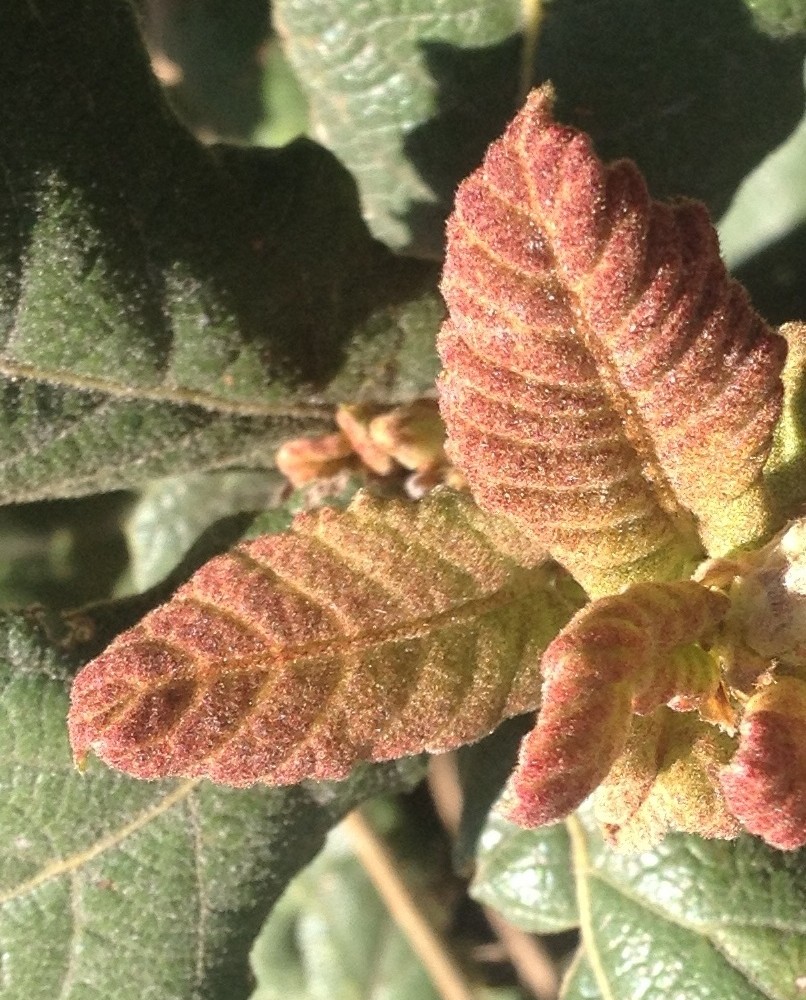Netleaf oak
(Quercus spinosa miyabei)

Description
Quercus rugosa, commonly known as the netleaf oak, is a broad-leaved tree in the beech and oak family Fagaceae. It is native to southern North America. Quercus rugosa is an evergreen shrub or tree. The bark is brown and scaly. The leaves are thick and leathery, rarely flat, usually cupped, up to 15 centimetres (6 inches) long, dark green on the top but covered with a thick of reddish-brown hairs on the underside. The young leaves are also very hairy and usually red or yellow. It is widespread in Mexico, Guatemala and the southwestern United States (Arizona, New Mexico, western Texas). It grows extensively in the temperate highlands of central Mexico, particularly on hillsides and in narrow gorges. It is associated and usually coexists with other oaks, alders, pines and Texas madrones. Quercus rugosa is Latin for "wrinkled oak". In Spanish it has many common names like "encino negro" (black oak) or "encino quiebra hacha" (axe-breaking oak). Colloquially it is known as "chaparro," a word which has also passed into the lexicon as slang for a short person. An oak is a tree or shrub in the genus Quercus (""oak tree"") of the beech family, Fagaceae. There are approximately 500 extant species of oaks. The common name ""oak"" also appears in the names of species in related genera, notably Lithocarpus (stone oaks), as well as in those of unrelated species such as Grevillea robusta (silky oaks) and the Casuarinaceae (she-oaks). The genus Quercus is native to the Northern Hemisphere, and includes deciduous and evergreen species extending from cool temperate to tropical latitudes in the Americas, Asia, Europe, and North Africa. North America has the largest number of oak species, with approximately 160 species in Mexico of which 109 are endemic and about 90 in the United States. The second greatest area of oak diversity is China, with approximately 100 species. Oaks have spirally arranged leaves, with lobate margins in many species; some have serrated leaves or entire leaves with smooth margins. Many deciduous species are marcescent, not dropping dead leaves until spring. In spring, a single oak tree produces both male flowers (in the form of catkins) and small female flowers, meaning that the trees are monoecious. The fruit is a nut called an acorn or oak nut borne in a cup-like structure known as a cupule; each acorn contains one seed (rarely two or three) and takes 6–18 months to mature, depending on their species.
Taxonomic tree:







